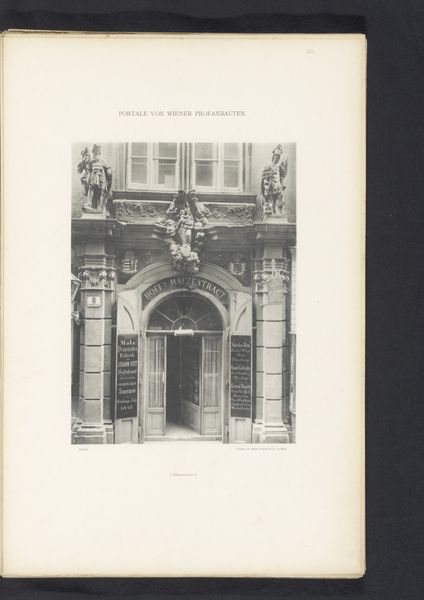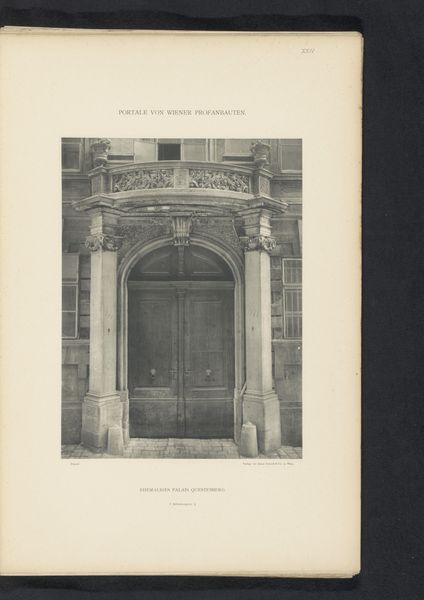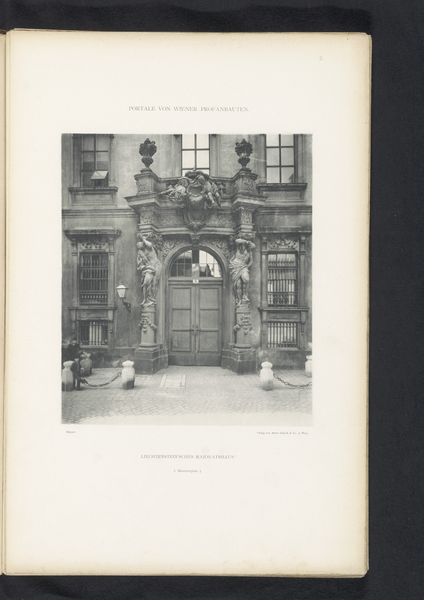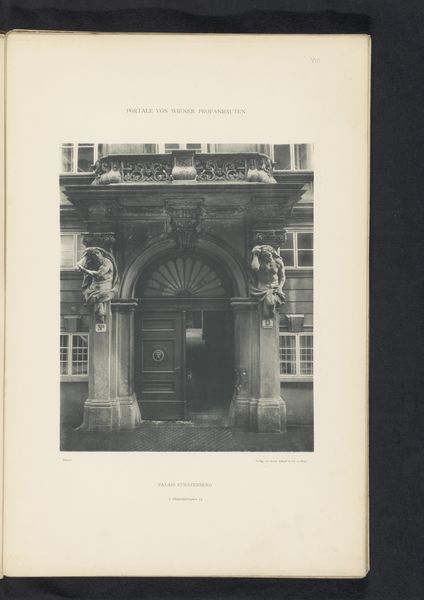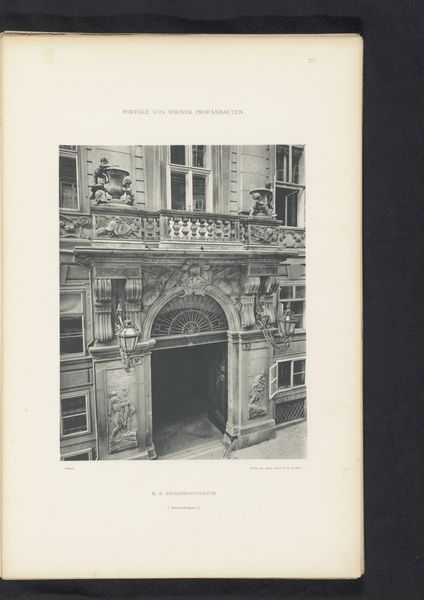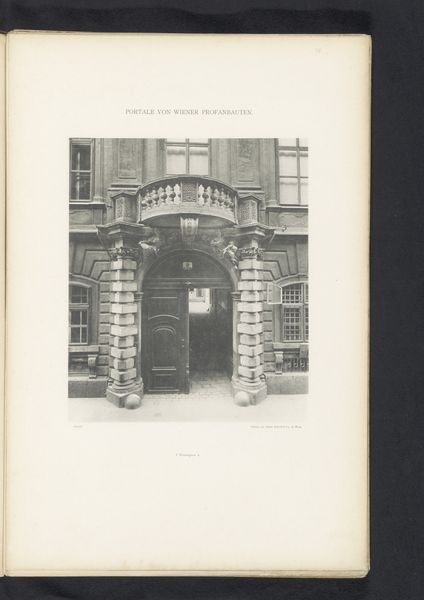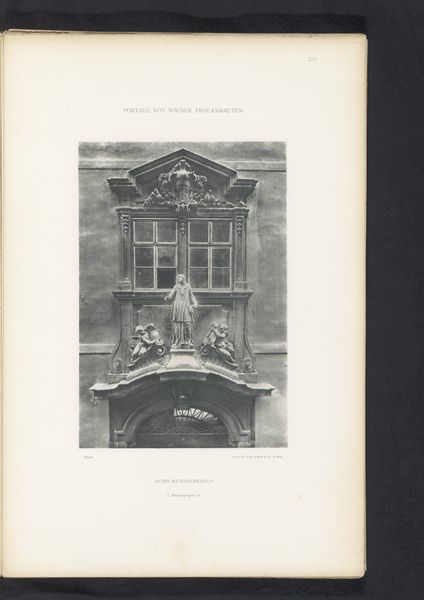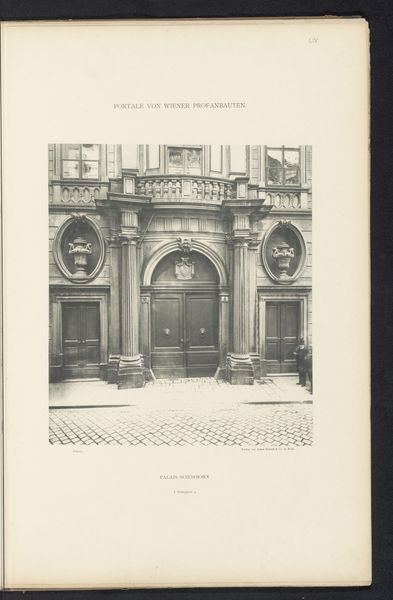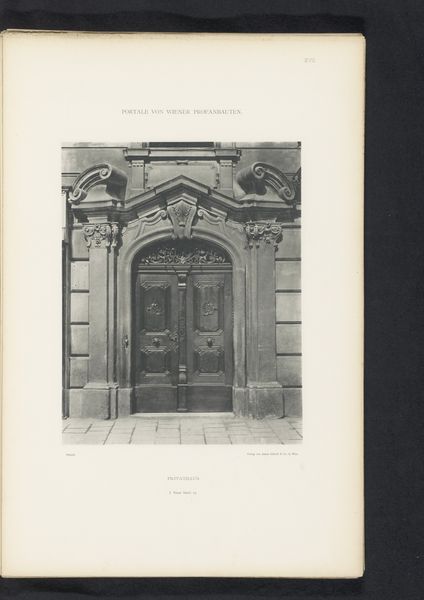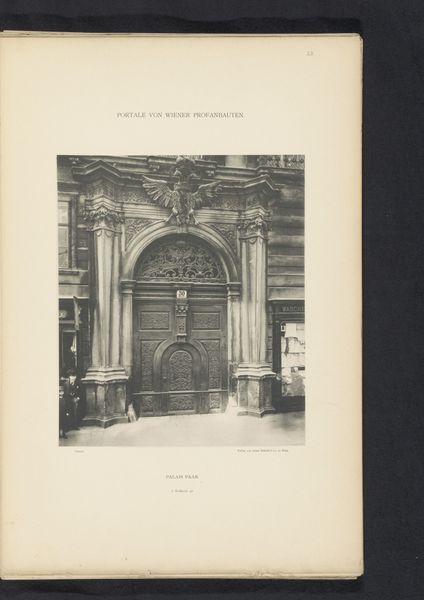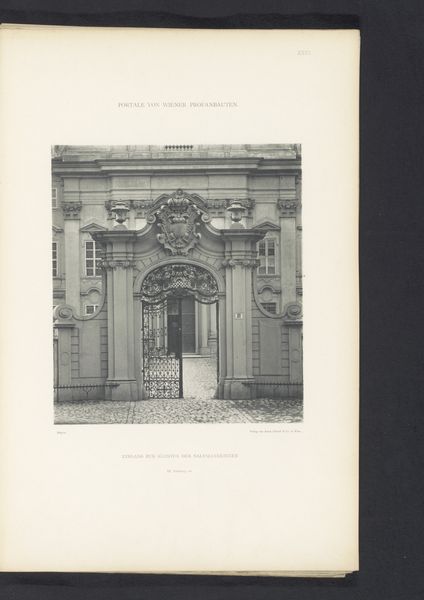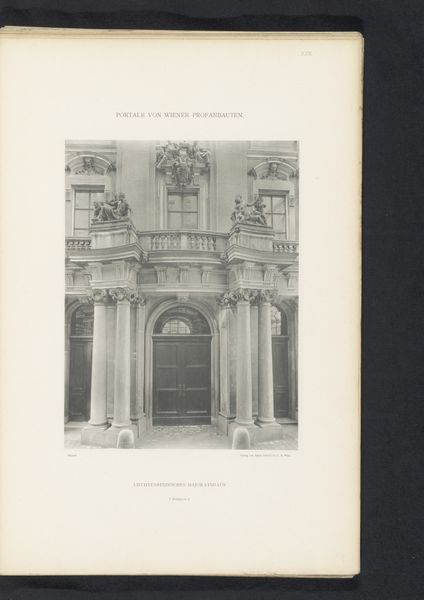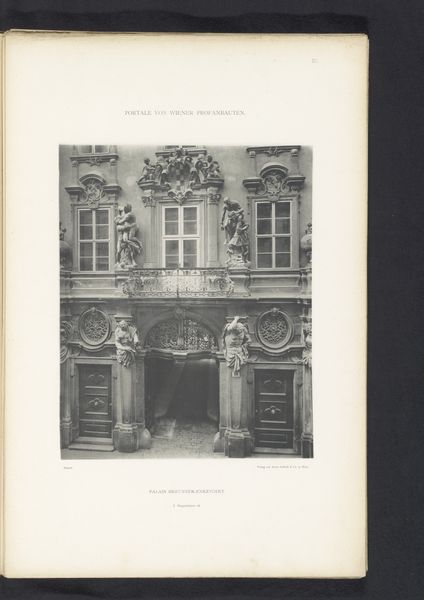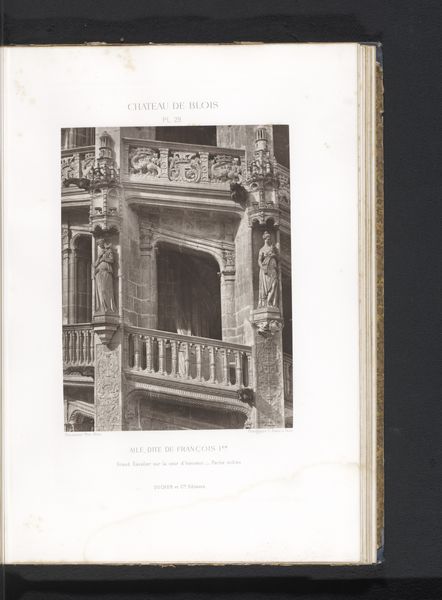
print, photography, architecture
# print
#
photography
#
geometric
#
architecture
#
building
Dimensions: height 272 mm, width 215 mm
Copyright: Rijks Museum: Open Domain
Curator: Looking at this photogravure, “Toegangsportaal van Palais Kinsky te Wenen,” taken sometime before 1894, the level of architectural detail is astonishing, isn't it? Editor: Absolutely! My first thought is the weight and imposing nature of the entrance. It feels like a barrier, despite its ornate decorations. What does its placement within a larger architectural context tell us? Curator: The Palais Kinsky itself has an interesting history; it was one of the grand aristocratic palaces erected during Vienna’s Baroque period. This particular entrance, with its atlantes figures supporting the architrave, speaks to a specific desire to project wealth and power onto the streetscape. The building aimed to physically manifest elite dominance. Editor: And let’s consider the medium itself. A photograph printed as a photogravure. What labor and materials went into creating this image, not just the building? Think of the social class of the Viennese laborers working the stones and those in the darkroom handling the photographic material. It's a multi-layered system. Curator: Precisely. The photogravure allowed for incredibly fine detail and tonal range. By the late 19th century, photography had begun to transform how architecture was disseminated, influencing building design across national boundaries and further bolstering public desires. Its ability to meticulously reproduce elaborate decoration fueled the desires for visual opulence within new building projects and public perception. Editor: And this form of dissemination undoubtedly influenced not just future buildings, but also shifted material aspirations across Europe. Think of how the growing middle classes would use imagery like this, effectively marketing high society's physical environments as something desirable to reproduce across various scales. It represents social and material aspirations that directly shaped labor patterns for construction industries in that era. Curator: It’s also significant that someone chose this particular viewpoint, emphasizing the doorway and its immediate surroundings. It invites viewers to imagine themselves entering this space. To reflect upon who had access and how entry might convey particular importance in defining Vienna’s social hierarchy. Editor: Seeing those shadows gives us a small glimpse of a long gone time in our current age of rampant social media; it calls into focus the permanence, both real and manufactured, sought after in art and architecture alike. I'm curious, does it still stand today? Curator: Indeed it does! A stoic reminder of an age of empires.
Comments
No comments
Be the first to comment and join the conversation on the ultimate creative platform.
